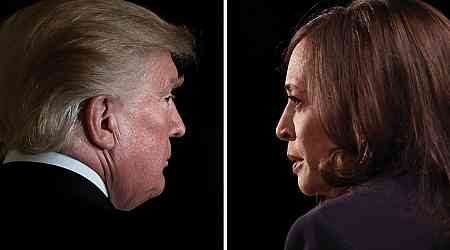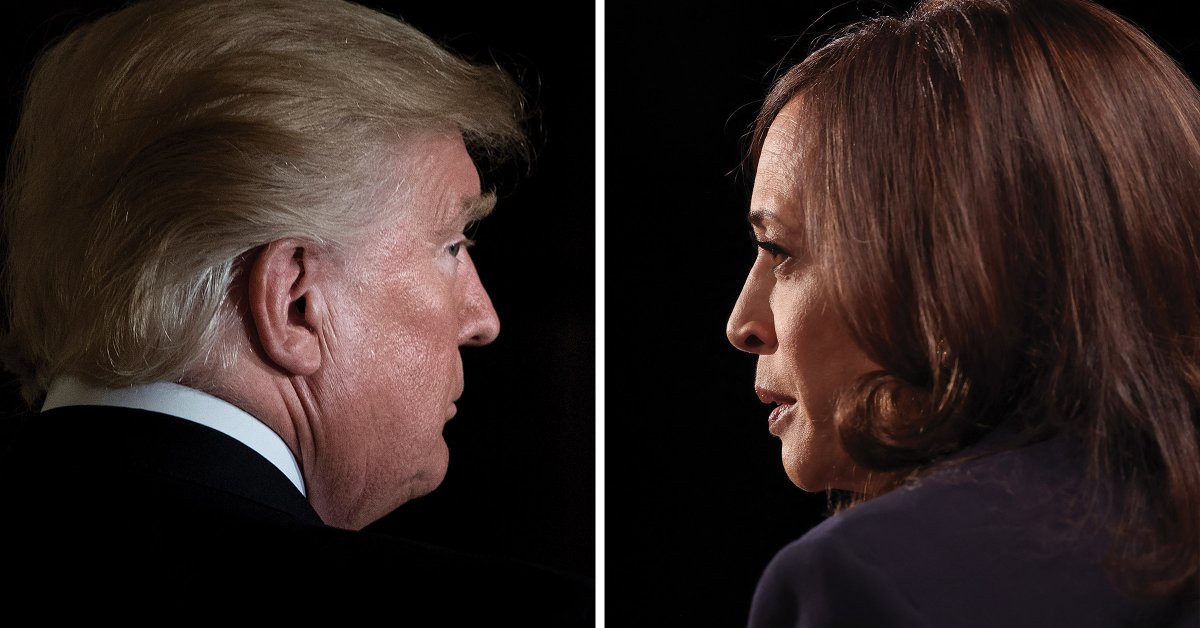
This article is part of The D.C. Brief, TIME’s politics newsletter. Sign up here to get stories like this sent to your inbox.
If you want to know where both sides think the 2024 election is going to be won or lost, look at where they’re aiming their campaign planes and, perhaps more importantly, their checkbooks.
[time-brightcove not-tgx=”true”]Every four years we resketch our U.S. electoral maps of the most competitive states. Some states fall out of favor. (Sometimes wrongly. Hi, Ohio and Florida.) Others come online. (Hello, Georgia.) Yet others rekindle their battleground flames. (You up, North Carolina, Virginia, or even New Hampshire?)
Put in the simplest terms: the national election of a President is a series of state-by-state contests. The result is a handful of states have an outsized say in picking the team in the White House, and they often can be grouped into clusters like the so-called Blue Wall or Sun Belt.
At the moment, strategists in both parties identify seven commonly-agreed-upon battleground states, with four more on the margins. Despite an advertising blitz that gives Vice President Kamala Harris’ campaign a two-to-one advantage on the air in the seven swingiest states through Election Day, former President Donald Trump has a narrow polling advantage in five of those states and holds an average lead of a narrow 1.4 points in those must-win states, according to RealClearPolitics’ (RCP) tracking system.
Here is a state-by-state breakdown of the seven states that insiders think will decide the results—and four others that might be worth keeping in mind. First, a crucial caveat: we still have not fully assessed what the swap from President Joe Biden to Harris and the addition of her running mate, Minnesota Gov. Tim Walz, will mean as fresh and better polling lands on strategists’ desks.
Pennsylvania
The biggest prize on the board right now and the most important piece of Democrats’ firewall against Trump. A combined $211 million of White House-focused messages is set to air in Pennsylvania alone, according to Axios’ analysis of ad spending, and it’s the one state where there’s relative parity in spending. Democrats’ campaign and super PACs are set to cover $109 million of it while Republicans’ efforts will power $102 million in the window between the end of the GOP primary and Election Day, both sides hoping to snag the state’s 19 electoral votes. Put plainly: it’s a rare fair fight where Republicans are matching Democrats’ ad spending, and it’s the most expensive sandbox for either party.
Polling, too, shows a fierce fight. Trump is ever-so-slightly ahead there by about 2 points, but well within the margins of error in the surveys. Democrats outnumber Republicans in the state by about 4 points, but independents still claim about 11% of voters. Essentially, the state remains a jump ball, and one that is tough to catch and even tougher to hold. To wit: at this point in 2016, Hillary Clinton was up 8 points over Trump and four years later Biden was up by 5 points. Come Election Day, Clinton lost the state to Trump by less than 1 point, and Biden carried it by about the same margin. No one from either party should feel cocky about Pennsylvania.
Wisconsin
The biggest regret for the Democrats in 2016. The last Republican to win Wisconsin before then was Ronald Reagan—twice—before Trump upended Clinton’s assumptions and carried its 10 electoral votes. Clinton never visited the state as the 2016 nominee. Her team was convinced history would hold and that corner of the Upper Midwest would stay blue. They were wrong, with Trump winning narrowly with just 47% of the vote.
Democrats are not making the mistake again. With $49 million in presidential advertising scheduled this general election cycle, the airwaves in Wisconsin are almost entirely the purview of what is now Team Harris. Trump’s media circle has just $15 million tied to the state, and has not matched Democrats’ aggressive efforts to court Black voters in Milwaukee the way Biden successfully did in 2020. The investments were made even before Harris became the first Black and Asian-American woman to lead a major party’s ticket, and Harris could be a changemaker on the political landscape in a locale with one of the better state party organizations in the nation.
Still, it’s lost on no one that Republicans convened in Milwaukee to officially nominate Trump. The earned-media circus there bombarded local voters, perhaps offsetting the Democrats’ packaged ads that strategists in both parties concede are mattering less and less (even as the old-school consultants continue to push them).
Michigan
The biggest unknown for either side. Michigan was a reliably Democratic state until 2016. Michigan—along with Pennsylvania and Wisconsin—effectively crushed Clinton’s path to 270 votes and Democrats are determined not to have a repeat of that hiccup. That’s why Harris and Walz parked Air Force Two there on Wednesday night for an airport rally that trolled Trump’s favorite tableau. Republicans are trying to make Harris’ and Walz’s support for Israel into a disqualifying factor in the state’s large Arab-American, Muslim, and young voter populations, but it may end up being more a phenomenon on social media than at the ballot box.
Even so, polling suggests a tight race for the state’s 15 electoral college votes. A Bloomberg/Morning Consult poll taken after Biden dropped out of the race gave Harris an 11-point advantage, although most polling this cycle has shown Democrats up by a scant two points. At this point four years ago, Biden was up more than 7 points but would win by less than 3 points. Similarly, Clinton at this point in her run was also up almost 7 points and would lose by about one-third of a point. This is a case where more polling needs to be conducted about the Harris/Walz ticket to carry any real weight with donors.
Down the ballot, it’s a roughly even split in the state’s $70 million in Senate ad spending. At the presidential level, it’s less balanced, with about 80 cents of every dollar on ads backing Harris, and the whole White House kitty is about $100 million in Michigan. Democrats brag that they’re miles ahead of Trump when it comes to organizing offices and communities, but that has been the case before to disappointing results.
North Carolina
The Democrats’ white whale, or the Republicans’ safety state. Trump enjoys his second-largest lead in polling averages there, but Democrats insist there is still a viable chance for them to make inroads. Only once since 1980 have the state’s 16 electoral votes gone for Democrats, but that is not stopping Democrats from laying down a $28 million marker to Republicans’ $4 million ad spending placeholder. It’s a similar optimism to 2012, when Democrats nominated then-President Barack Obama for a second term in Charlotte only to see a 2-point defeat.
Still, there’s a rational reason for Democrats to focus on this Southern Wall Street: voters who affiliate with neither party are the largest bloc in the state, with almost 37% saying they don’t match a Republican or Democratic label. Democrats have a slight, 2 point advantage there, but that’s not sufficient to carry the state. This means Democrats are smart to use North Carolina as a proving ground for their efforts to reach persuadable, non-partisan votes. If Democrats can nail North Carolina, that’s a solid test kitchen for them to replicate the political cake elsewhere.
Georgia
The newest member of the swingers’ club. Before Biden’s 2020 bid prevailed there—much to Trump’s allegedly criminal objections—the last Democrat to carry the state’s electoral votes was Bill Clinton back when Sony was introducing MiniDiscs in 1992. The rising power of the Black vote and the migration of the film and TV industry to Atlanta shifted Georgia in a major way. Coordinated efforts to empower Black voters yielded an all-blue Senate delegation in 2021 for the first time since 2003, and Democrats remain bullish that they could still throw its 16 electoral votes to Harris.
On the air, Democrats have a clear two-to-one margin in the $87 million general election bookings. On the phones, Democrats have quickly erased what had been a Trump advantage in polling since Harris emerged as the new top of the blue ticket. A week before Biden’s calamitous June debate that put in motion the drumbeat that marched him aside, Trump was polling 10 points ahead. That advantage is now less than 1 point.
Without a Senate race and boasting zero competitive House races, the White House race is the whole game in Georgia. That means Harris’ ability to fire up Black and women voters is where that race hinges there. And, for Trump’s campaign, the anecdata does not give reason for much hope. Perhaps that explains why Trump visited Georgia over the weekend and spent much of his time on the ground attacking fellow Republicans and laying the predicate to again claim the state is rigged against him. “Trump may have just lost Georgia,” a former lawmaker there told my former colleague Greg Bluestein of The Atlanta Journal-Constitution after the rally.
Arizona
The New Colorado. Long a bastion for conservative orthodoxy, the state that sent Barry Goldwater and John McCain to Washington was a consistent gimme for Republicans. Absent the blips of 2020 and 1996, you’d have to go back to Harry Truman’s 1948 re-election bid to find evidence that its 11 electoral votes were in play. (For the record, Trump still hasn’t accepted the results of his narrow loss there in 2020.)
The Democrats’ ad agencies have logged about $44 million for the general election, lapping the Republicans’ $17 million. It might be sage restraint from the GOP bookers, though. Trump has consistently polled better in Arizona than his Democratic opponent in all but one public poll dating back to October. Bloomberg/Morning Consult is the lone voice saying Harris is up by 2 points, but that’s inside the 3-point margin of error, meaning it’s another jump ball. On average, Trump is up by about 3 points in the RCP averages. Yet again: more information is needed here.
Down the ballot, the Senate race is tilted heavily in Democrats’ favor, with about 84 cents of every ad dollar on their side of the ledger. The roughly $65 million-to-$12 million mismatch will certainly help Democrats across the party in a state where two Republican-held House seats are in play. And, no, you didn’t read those numbers wrong; spending on Senate ads is outpacing presidential spending in that state so far.
Nevada
Trump’s surprising stronghold. Despite his hostile rhetoric toward migrants and immigrants, and a xenophobic patina that has been present since the creation of his political ambitions, Trump is maintaining his most durable lead there. In the RCP poll average, Trump is ahead by about 4 points while incumbent Democratic Sen. Jacky Rosen is up by the same margin, perhaps setting herself to be the first incumbent member of the Upper Chamber to split a statewide ticket since Susan Collins did in Maine in 2016. On top of that, there are three House districts that lean Democratic but are far from certain.
On the air, Nevada and its six electoral college votes is the puny pal for the other six main swing states. Democrats have booked a relatively paltry $24 million on the screens, still dominating the $27 million in play. Rosen’s side has placed about $72 million of the $102 million on the table for the Senate.
The major unknown is what the labor movement will do. Unions were hardcore Biden allies, but the transfer of their loyalty to Harris is expected but not guaranteed. It’s why she is heading there on Thursday to start to make sure labor is still with her.
The four fringe states
These are not the big-ticket targets for the campaigns, but some strategists in the states—and some home-state loyalists—think they were prematurely cast aside.
Ohio has fallen from its once-time legendary status as bellwether bigwig. Trump won its 17 electoral college votes twice with only minimal effort and the state Democratic Party is a far cry from its last heyday during Obama’s campaigns. But with a competitive Senate race there drawing $310 million in a roughly even split and on track to be the most expensive airwar in the Senate this cycle, there will be a whole lot of interest in turning out voters in a state that leans red but still gave incumbent Democratic Sen. Sherrod Brown his last term by an almost 7 point margin in 2018.
Republicans are desperately trying to pitch Virginia as a potential pick-up place for Trump and are trying to build a bare-bones campaign machine there to force Harris to invest. But popular Democratic incumbent Sen. Tim Kaine seems coasting toward a third term. The airwaves for that Senate race are largely empty, although three of the state’s 11 congressional districts will lack an incumbent seeking another term, meaning there could be some spending in the northern Virginia suburbs around D.C.
Democrats, meanwhile, are trying to make a similar play in Florida. Trump won the state twice, but only by about 3 points in 2020. Yes, it’s his home state these days, but there is also a Senate race that has some Democrats optimistic that former Rep. Debbie Mucarsel-Powell could knock off Republican Sen. Rick Scott, who has never won any of his races with a majority of the vote. Harris is hustling for Florida’s 30 electoral votes, especially in South Florida.
Finally, there’s always Texas. Democrats for years have said the state’s changing demographics would decide its destiny. Yes, the population is softening its conservative shell, but it’s still Texas. Democratic Rep. Colin Allred is posting fine polling but he remains a longshot to bump Sen. Ted Cruz out of Washington. Democrats have parked about $25 million down there for the Senate race, almost entirely unopposed by Cruz and his allies. Most polls have Cruz’s advantage in single digits, meaning a late wave of blue energy could shift this long-promised and never-realized realignment of Texas. Texas has a huge load of 40 electoral votes and a massive media landscape, but taking the Lone Star State off the GOP gimme list would be a coup unseen in a generation.
Make sense of what matters in Washington. Sign up for the D.C. Brief newsletter.


























